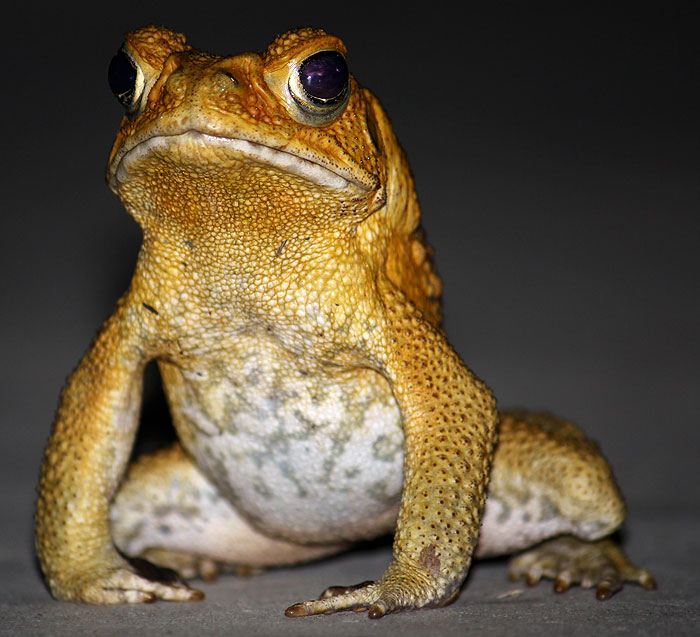Eastern Horseshoe Bat (Rhinolophus megaphyllus)
Sticking with the Bat theme, let me introduce you to this little chap: The Eastern Horseshoe Bat (or smaller horseshoe bat). Now, we have a number of insectivorous bats that swoop and cavort their way around the joint on any given evening, but usually they are gone in the blink of an eye. This one however, was quietly roosting under our porch so the opportunity to snap some pics was just to good to miss.
Unfortunately, once again, these bats are thought to carry zoonotic disease(s). In this case it's Severe Acute Respiratory Syndrome coronavirus (SARS-CoV), which killed 774 people in a pandemic in 2002-2003 in China - During that outbreak, more than 8000 people were infected with the virus, and the mortality rate reached almost 10 per cent.
Frankly, I thought long and hard about including the above quote. Not least because people have a way of focusing on the negative, sometimes to the exclusion of all else. But I've decided that it's better to present what facts I can and trust that the majority of people who visit this blog have the wherewithal to distinguish fact from hype.
Back to the Bat.
The shape of the nose gives away the origin of the name and the flap of skin at the top is called a 'nose-leaf', and is used as a guide to identification by scientists. The hook you can see on the leading edge of the wing is a modified thumb used for gripping and climbing.
In fact the whole wing is actually a large claw (or hand if you prefer), with the membrane stretched between the digits providing enough surface area to generate lift and enable flight.
As I said, these guys are insectivorous and probably polygamous, (males have more than one mate per breeding cycle). Again, these bats are excellent mothers, during pregnancy females form maternity colonies with one pup being born in late Oct-Nov and will be cared for by the female until it is able to fly and hunt for itself.
These guys though aren't the fastest flyers, as they tend to spend most of their time hunting in dense and tangled forests, manoeuvrability - rather than speed is the order of the day. Happily, on the IUCN Red List the Bat rates as lowest risk, least concern. Which makes for a welcome and refreshing change, eh?.
An intriguing and unique little mammal - one that I am really stoked to be able to share with you :)
Unfortunately, once again, these bats are thought to carry zoonotic disease(s). In this case it's Severe Acute Respiratory Syndrome coronavirus (SARS-CoV), which killed 774 people in a pandemic in 2002-2003 in China - During that outbreak, more than 8000 people were infected with the virus, and the mortality rate reached almost 10 per cent.
The researchers said that horseshoe bats, which are an important part of ecosystems around the world, including in Australia, harbour the SARS-CoV virus - highlighting the importance of protecting the bat’s natural habitat so they are not forced into urban areas where they are likely to come into close contact with humans.
Frankly, I thought long and hard about including the above quote. Not least because people have a way of focusing on the negative, sometimes to the exclusion of all else. But I've decided that it's better to present what facts I can and trust that the majority of people who visit this blog have the wherewithal to distinguish fact from hype.
Back to the Bat.
 |
(Rhinolophus megaphyllus) |
The shape of the nose gives away the origin of the name and the flap of skin at the top is called a 'nose-leaf', and is used as a guide to identification by scientists. The hook you can see on the leading edge of the wing is a modified thumb used for gripping and climbing.
In fact the whole wing is actually a large claw (or hand if you prefer), with the membrane stretched between the digits providing enough surface area to generate lift and enable flight.
 |
It's thought the shape of the nose helps with echolocation |
As I said, these guys are insectivorous and probably polygamous, (males have more than one mate per breeding cycle). Again, these bats are excellent mothers, during pregnancy females form maternity colonies with one pup being born in late Oct-Nov and will be cared for by the female until it is able to fly and hunt for itself.
These guys though aren't the fastest flyers, as they tend to spend most of their time hunting in dense and tangled forests, manoeuvrability - rather than speed is the order of the day. Happily, on the IUCN Red List the Bat rates as lowest risk, least concern. Which makes for a welcome and refreshing change, eh?.
An intriguing and unique little mammal - one that I am really stoked to be able to share with you :)
Smaller horseshoe bats are found in temperate and tropical rainforests, deciduous forest, sclerophyll forest, woodlands, coastal scrub, and grasslands. They roost in caves, mines, rock outcrops, and non-occupied buildings. Smaller horseshoe bats can be seen forming colonies in abandoned bunkers.
During the breeding season, colonies are usually small, having less than twenty bats. However, outside the breeding season, colonies consist of up to two thousand individuals. Those bats that occupy temperate regions become torpid during winter months and form single roosts. Tropical areas are occupied year round, with the bats remaining active.
Take care - Paul
During the breeding season, colonies are usually small, having less than twenty bats. However, outside the breeding season, colonies consist of up to two thousand individuals. Those bats that occupy temperate regions become torpid during winter months and form single roosts. Tropical areas are occupied year round, with the bats remaining active.
Take care - Paul






Comments
Post a Comment